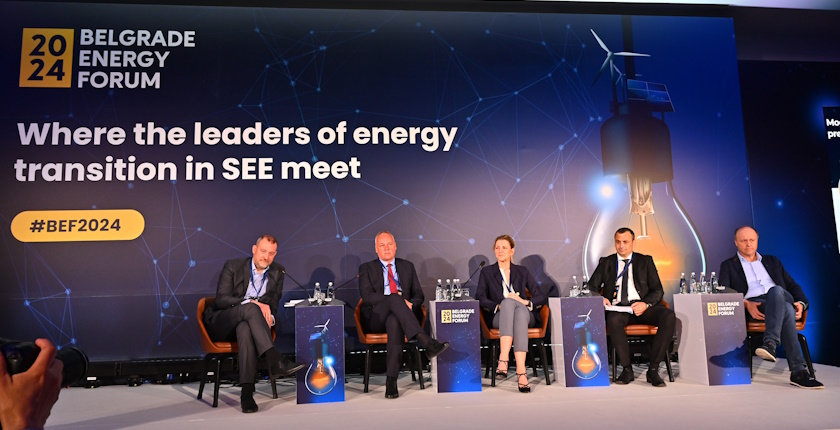
Photo: Balkan Green Energy News
Serbia’s new rules for connecting solar parks and wind farms to the transmission system, operated by Elektromreža Srbije, are a test for both the state-owned company and investors, according to participants at Belgrade Energy Forum. At a panel discussing possible solutions to grid challenges, speakers said the goal is to ensure that the energy transition and the evolution of the power system are technologically and economically viable and that they benefit electricity consumers. At the conference, organized by Balkan Green Energy News, it was also noted that the biggest challenges in the energy transition are system security and the security of supply, as well as flexibility, system stability, and economic efficiency.
In the last ten years, state-owned high-voltage grid operator Elektromreža Srbije (EMS) has built more than 700 kilometers of power lines and over 3,000 MVA in transformer stations, said Nenad Šijaković, advisor to EMS’s general manager responsible for international and regulatory affairs. He said that the main drivers for investments in infrastructure are the integration of intermittent renewable energy and efforts to increase the security of supply for domestic consumption.
EMS is also working on digitalization and the application of artificial intelligence as well as on improving the grid connection procedure, he said, adding that the operator has also began joint reserve dimensioning with neighboring Montenegro and North Macedonia.
According to him, the biggest challenges in the transition process are system security and stability, the security of supply, flexibility, and economic efficiency.
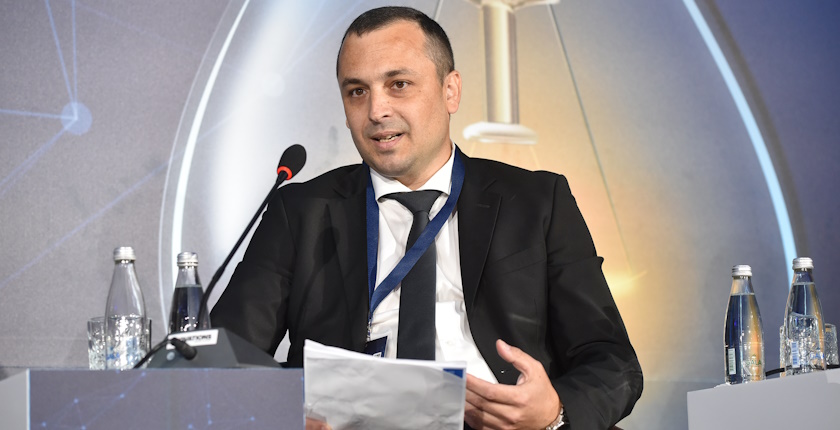
The security of supply is the biggest challenge
If ordered by difficulty, the challenge of security of supply would take the top spot, followed by system security and flexibility, according to him.
Talking about system security, Šijaković said the grid must be adequately prepared to handle and store any energy surpluses for longer periods – in pumped storage hydropower plants, reservoirs, or thermal storage facilities.
When it comes to the security of supply to consumers, in the event of a shortage of intermittent energy sources, the power system must have baseload power plants, such as thermal power plants or nuclear plants, he stressed.
Serbia plans to build two large pumped storage hydropower plants – Bistrica and Đerdap 3, he recalled. Battery storage, on the other hand, addresses dispatch issues in real time, Šijaković noted.
Flexibility, he said, is addressed through digitalization, or vertical connection, so that information from the consumer can reach the transmission system operator, responsible for regulation in the power system, via the distribution system operator.
The Electricity Coordinating Center’s (EKC) Principal Engineer Nebojša Jović moderated the panel discussion.
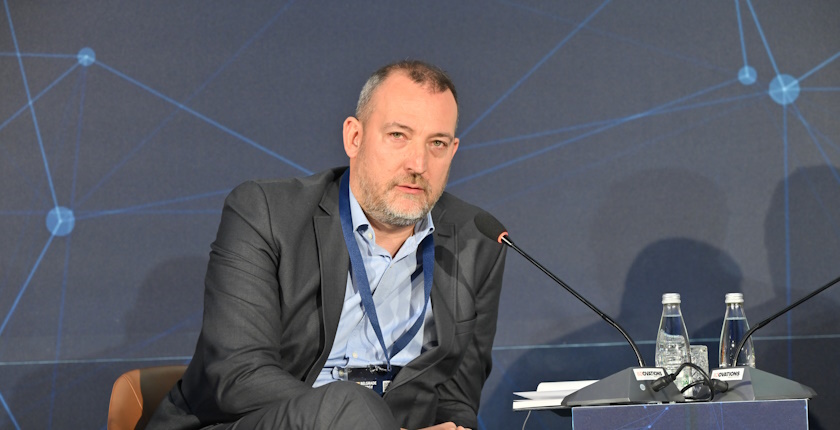
Mijušković: Energy surpluses will be a big problem
Aleksandar Mijušković, Chairman of the Board of Directors of the Montenegrin transmission system operator CGES, said the country has liberal conditions for connecting power plants to the grid. Montenegro has become an energy hub, primarily thanks to the undersea power interconnector with Italy and the interest of investors in transferring that energy to the European market, he said.
He said that Montenegro has a low demand capacity and about thirty pending requests for the connection of planned power plants. The maximum demand capacity is 500 MW, and the requests are for a total of 4,000 MW, Mijušković pointed out.
Investor interest is ten times the size of Montenegro’s demand
The interest of investors in power plants is ten times the size of Montenegro’s consumption needs, according to him.
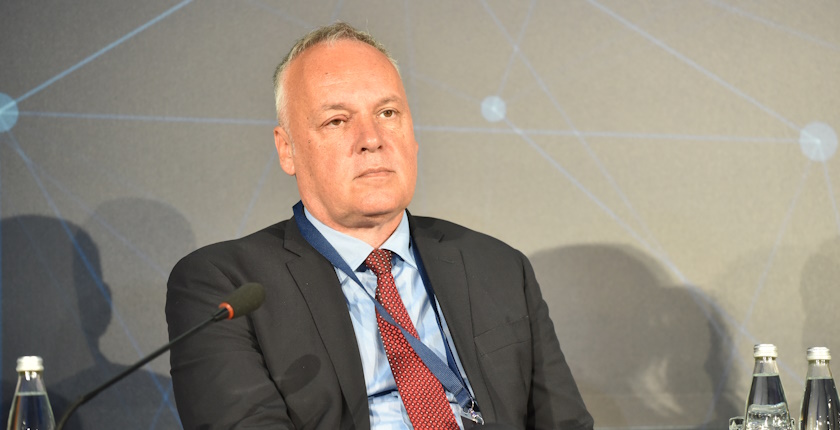
Montenegro is working on a new 400 kV transmission line from Lastva to Pljevlja, and plans to build a hub with six transmission lines that would facilitate the connection of renewable energy sources, Mijušković explained.
Stressing the critical importance of the grid, he said that sometimes investors in Montenegro propose new solar power plants or wind farms, and politicians sign memorandums of understanding without considering whether it would be possible to connect them to the network.
CGES is often in a situation where it has to inform an investor, who has already secured funding and partners, that connecting to the grid is not possible in that particular location and in the proposed manner, and that it would require much more time, according to him.
In Montenegro, the construction of transmission lines sometimes takes ten years, due to obstruction, ownership issues, and problems with the owners of land along the planned route, Mijušković pointed out.
According to him, energy surpluses will become a big problem that must be addressed.
Turković: A bank guarantee must now be maintained for five to seven years
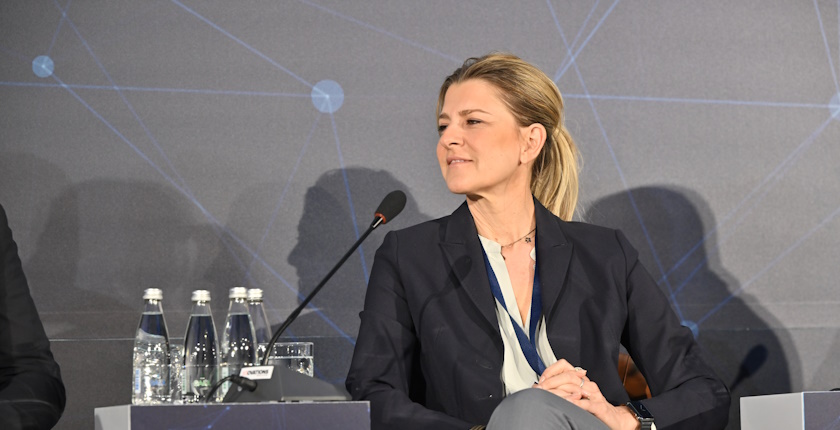
Vice President for Europe at CWP Global Maja Turković expressed the belief that with the new grid connection rules, the operator protects its resource by requiring collateral in the form of a not-so-small bank guarantee, significantly raising the stakes. In her view, this will be a test for both EMS and new investors.
Noting that before the changes were adopted, access to the transmission system was “very cheap,” Turković emphasized that now the bank guarantee has to be maintained until the functional testing, or five to seven years after the contract signing.
“Investors will not leave easily, because they have already started to invest money and protect their interests,” said Turković.
It is important that the law equally protects both sides
She says that the new system is a trial for both sides, and that it is very important for EMS to be completely sure of what it is giving to the investor, but also for the other party to be aware of the obligations and rights they accept under the contract.
Turković said that it is extremely important for both parties to abide by the law, which protects them, and that the laws apply equally to all parties in the procedure.
“The moment when the investor needs to post a multimillion-euro guarantee is a moment when the project is far from being risk-free. There is still plenty of time for various problems to arise,” according to Turković.
Noting that there is congestion with requests, Turković said that there are also problems the grid connection procedure has not fully resolved.
Responding to Maja Turković’s comments, Šijaković said that the process of producing a grid connection study is extremely complex, and that a study aimed at improving that process is underway. The foreign operators helping EMS with this issue face the same problems even though they are far ahead of Serbia in terms of integration of intermittent renewable energy sources, he added.
Ngen Group: Every kilowatt produced must be consumed

Co-founder and CEO of NGEN Group, Roman Bernard, said that Eles, Slovenia’s TSO, is very advanced, adding that the grid poses the greatest technical challenge for operators and distributors. Within the grid, the biggest challenge is capacity, according to him.
Every kilowatt that is produced has to be consumed somewhere, and operators face a big challenge sorting this out, he noted.
The solution lies in smart grids, but also smart consumers
He stressed that operators should build smart grids capable of balancing surplus energy, but added that there can be no smart grid without smart consumers.
In Slovenia, there are already around 1,000 residents whose homes are included in secondary regulation.
He also pointed out that great attention should be paid to software and cyber security.














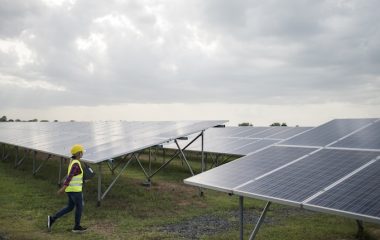



Be the first one to comment on this article.